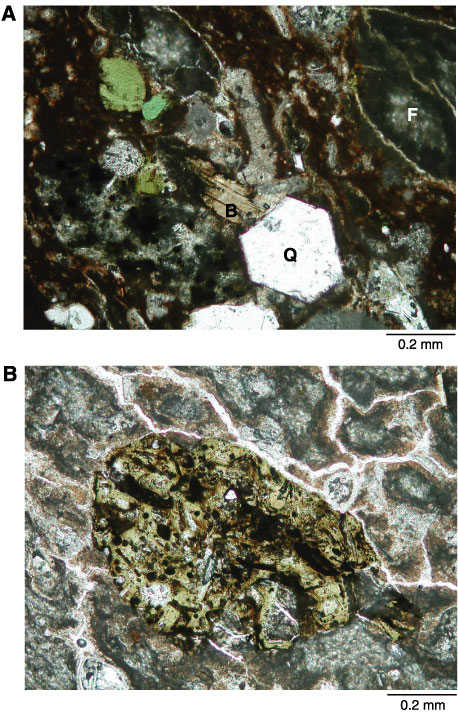
Figure F29. Photomicrographs of volcaniclastic sediment from near the base of Unit 2 (Sample 210-1276A-15R-2, 25-27 cm). Both views are from the same thin section, in which large sand grains are set in an iron-stained marlstone matrix (see Fig. F25 for sample location). A. Cross-polarized light emphasizes birefringent calcareous components in darker, iron-stained mud matrix. Darker, nearly isotropic grain in upper right corner may be felsic glass (F). Euhedral quartz grain (Q) in center bottom is probably of volcanic origin. Light tan grain with cleavage at center is biotite (B). Other irregular grains (light tan) are calcareous bioclasts and lithic debris. Note that the greenish glauconite grains are not all the same shade of green, perhaps suggesting different chemical compositions and different provenance. B. View of a different part of the thin section in plane-polarized light showing prominent rounded, altered microlitic glass (brown, in center). White rectangular plagioclase microlites in this glass are set in a vitric groundmass now devitrified and altered to clay minerals. Dark patches might be a combination of vesicle fills (round) and altered mafic minerals. Texture and alteration style suggest that this grain is of mafic composition. Note severe cracking of surrounding tan matrix, probably caused by shrinkage of matrix clay minerals during thin section preparation. Lighter fragments in the matrix are foraminifers and micritic carbonate.



![]()